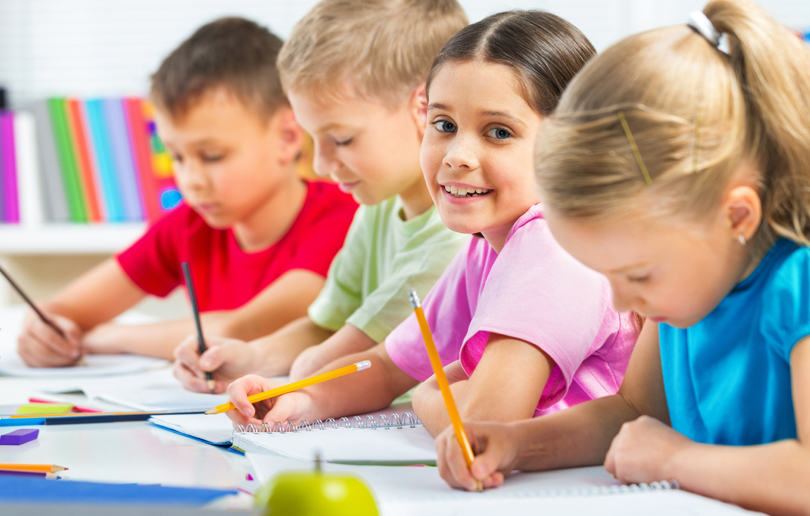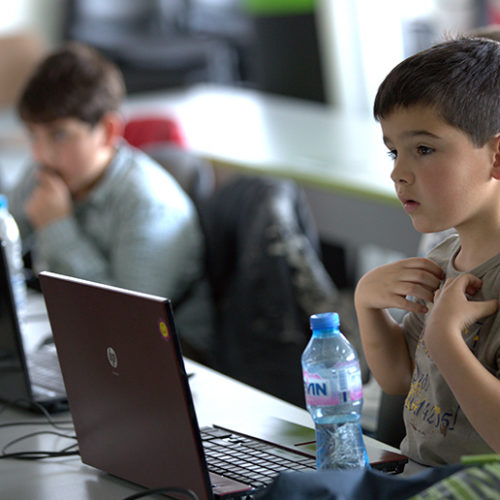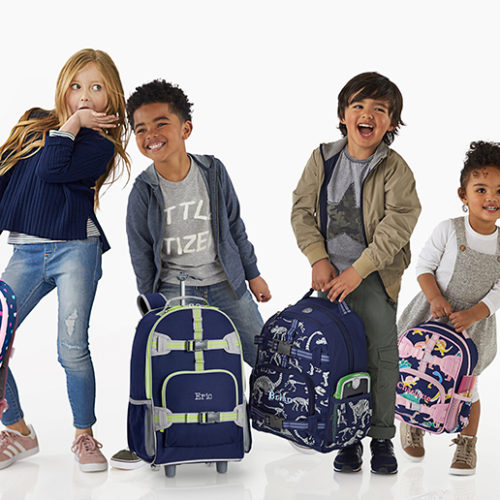Why mindfulness in education is important
Hala Khalaf looks at the importance of mindfulness in education, and how parents can equip their children with techniques that help them focus and perform better in class

‘Mindfulness’ is a modern buzz word that, over the past few years, has edged itself into every facet of living. Interest in the concept and application of ‘mindfulness’ is not only showing no signs of slowing down, it is gathering pace. It has been assimilated into the corporate world, applied to workouts and relationships, entrenched into the way we approach food and eating, and is even attached to breathing techniques.
Nowhere, however, has mindfulness – the idea of being present and aware of our thoughts and feelings as they arise in the moment – shown itself to be more useful than when it is applied in education and taught to children at a young age.
So what exactly is mindfulness? In simple terms, it is the practice of learning to pay attention and has its basis in brain science and neurology. It helps children to increase their attention span, their compassion and empathy, their academic performance and their sense of purpose, among many other things.
In fact, if mindfulness was taught as a natural part of children’s lives, both at home and at school, the world would become a more loving, peaceful and calmer place to live in, believes Helen Williams, a counsellor and psychotherapist.
Director of MindfulME in Dubai (www.mindfulme.me) and Editor of Consistent Parenting Advice (www.consistent-parenting-advice.com), Williams says that mindfulness teaches children how to notice their reactions, understand them and go on to choose a more considered response.
“Mindfulness practices that encourage children to be compassionate towards themselves and others, to practice self-kindness, self-comfort and self-soothing greatly help children to be more in control of their difficult emotions and to be self-aware,” she says. “Teaching loving kindness as a practice enables children to be more aware of the impact of their behaviour on others, and to be less self-judgmental and self-critical.”
Schools across the UAE are beginning to appreciate the importance of teaching mindfulness both to children and to teachers, in order that teachers may incorporate the practice into their classroom and their interactions with children. At the Greenfield Community School (GCS) in Dubai, two mindfulness rooms were set up to help students re-centre themselves and grow as individuals, while focusing on all things positive.
“Practicing mindfulness has profound impacts on children’s health and overall well-being,” says Rola Ghadban, the Mindfulness and Well-being Coordinator at GCS and the mastermind behind the project. “In my classrooms, I have seen how a daily mindfulness practice can help our students’ mental clarity, their emotional intelligence and help to improve their focus.”
GEMS American Academy in Abu Dhabi teaches mindfulness to its school body, and psychologist and mindfulness educator Anna Kaminski is using the practice of mindfulness to help students with special needs at Raha International School. “It’s important to make mindfulness available to children, because it works,” says Kaminski, who has written two children’s books that are centered around the theme of mindfulness – Mrs K Begins Again, which deals with resilience and introducing breathing techniques; and I Think I Can’t Sleep, which looks at thought awareness and introducing body scans techniques to calm thoughts and help children fall asleep (both available on Souq.com).
So how best to teach children about mindfulness, and have it better incorporated into education and everyday life, both at school and at home?
You need to learn it first
Mindfulness begins with the teachers and parents, says Williams. “Having a daily mindfulness practice and living a daily mindful life as teachers, school administrators and educators is the best way to establish and incorporate mindfulness into the classroom,” she says. “Teachers who live with a practiced understanding for themselves are far more able to teach by embodying and mirroring the teachings as a lived experience.”
GCS is on the right track; students visit the mindfulness room several times a week to practice various mindfulness and meditation techniques.
As for home life, “ideally, parents should also have the opportunities for learning how to live mindfully so that children are being constantly supported with this in their learning environment,” says Williams.
You need to believe in it
Countless studies have shown it works, stresses Kaminski. It’s certainly not a treatment, or a magic pill, but it is nevertheless a revolution in mental health.
Williams says it can change our relationship with stress, through instilling a relaxation response that is a direct result of breathing practices. “This creates a significant impact on physical health and emotional wellness, and on children’s ability to focus and concentrate on what is actually happening, as it happens,” she says. “Many children struggle with quite high levels of anxiety and fear, so learning ways to de-stress, relieve anxiety, manage difficult emotions and have the space to settle into calm will greatly assist learning.”
You need to use different approaches to mindfulness
“Mindfulness practices can be taught as meditations, breathing exercises, fun games, written exercises, or physical practices such as mindful walking and musical experiments,” says Williams. In fact, there are numerous, different and interesting ways to introduce the practice to children. “Anything that sparks attention, encourages focus, is experienced as enjoyable and bears the fruit of embodied calmness, which is measurable through personal experience, encourages mindfulness to be a natural space throughout the day.”
You need to keep at it
“Regular short mindfulness breaks exercised throughout the day as a normal part of the daily routine and curriculum would be ideal to support children towards awareness of themselves, their environment and the present moment,” says Williams.
Want to try mindfulness for yourself?
This is an exercise you and your child can do together:
At bedtime, teach your child to be aware of their breath. As they are stretched out in their bed, place your hand gently on their tummy and ask them to make it rise and fall. Explain to them that this process supplies their heart, mind and body with vital oxygen and that breathing also helps get rid of waste and toxins. Talk about what their body feels like when they breathe. Ask them to hold their breath and discuss how that makes them feel.
This exercise connects your child to the power and significance of their breath, something we don’t think about, consider or are aware of despite doing it over 20,000 times a day. Learning to work with the breath is also key in managing stress. You are giving them, as well as yourself, body awareness.
Details: For more information, visit Mindful ME. If you enjoyed this article you may like this story on preparing your toddler to start school.











Comments